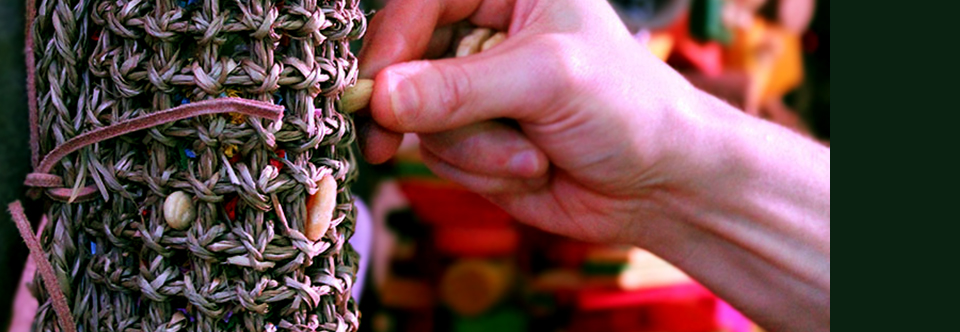
by Fauna | Oct 10, 2013 | Aviary, Blog, Products
This week we would like to spotlight one of our favorite products for birds, the California Roll. Unlike its sushi friend this one is far from fishy! This item was designed to be a fantastic toy for pet birds. We have found that it is one of the best foraging toys for birds with little effort for the lazy human! Simply by inserting dry treat items into the perfectly sized opening in the mat you can create hours of foraging opportunities for your feathered friend. While we may not like to work for our food it has been proven in scientific studies that birds do. The study showed that when offered an open dish of food that the birds in the study preferred to feed from stations where they had to forage. . . Foraging can help with behavioral issues such as screaming when you leave the room, feather picking and self mutilation among many other things. Over weight birds and birds that typically don’t play with toys can benefit from working for food as well. Give it a try and share photos of your birds using the California Roll with us! . To learn more about Fauna NYC, visit our website! Sign up for our eNewsletter for new animal arrivals, product discounts, and upcoming events....
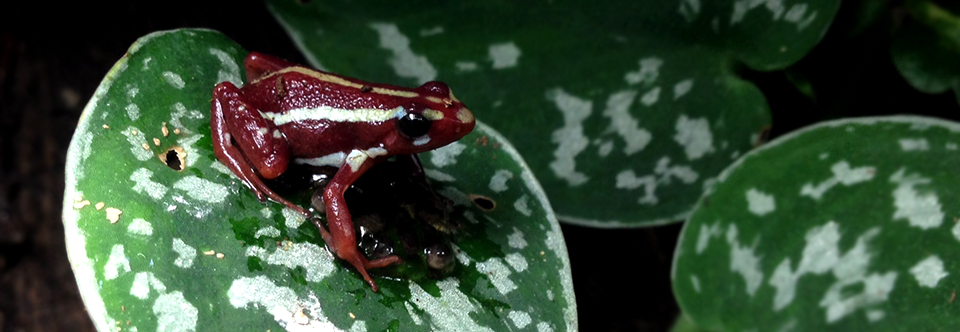
by admin | Oct 9, 2013 | Amphibians, Blog, Frogs
Santa Isabels (Epipedobates anthonyi) are a very prolific species of poison dart frog. Like many dart frogs, they get their name from the locality in which they are native. Here is a picture of a male guarding some freshly laid eggs. This photo was taken just as the tadpoles were hatching. They can freely wiggle in the jelly mass until the male comes to transport them into a puddle of water left by the rains. Males are capable of transporting more than 20 tadpoles at a time! . To learn more about Fauna NYC, visit our website! Sign up for our eNewsletter for new animal arrivals, product discounts, and upcoming...
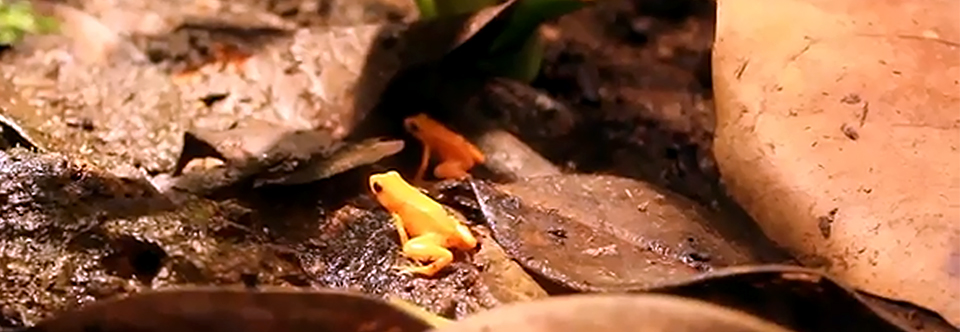
by Fauna | Oct 2, 2013 | Amphibians, Blog, Frogs
Mantellas are a colorful and diverse genus of terrestrial frogs from Madagascar. At Fauna, we have a breeding group of golden mantellas (Mantella aurantiaca). You may have seen them hopping around in their terrarium on the front counter. Given the right conditions, Mantella aurantiaca breed readily in groups. They breed during the wet season, which means they need high humidity (over 80%), lots of misting, and LOTS of flightless fruit flies dusted with calcium and vitamins. If everything is right, the sexually mature males will begin to call. Unlike many species of frogs, mantellas only call during the day. Their throat puffs up and they make a short clicking noise to attract a female. If a female deems him adequate, she will follow him to a secluded spot to lay her eggs – usually on the water’s edge. He then fertilizes them and they both abandon the eggs. The small, white eggs develop into a tadpole in 2-6 days. Then the round, protective jelly encasing each egg collapses into a large blob of fluid. In the wild, rainwater would wash the tadpoles out into the water below. We remove the eggs and place them on a rock at the water’s edge in our tadpole tank. They are misted to keep moist until they are large enough to wiggle themselves free. The tadpole tank has a few rocks and plants for them to hide. A partially submerged piece of slate, placed at an angle, allows the hatching tadpoles to slip into the water. It is also useful for metamorphosing tadpoles to exit, emerging as...
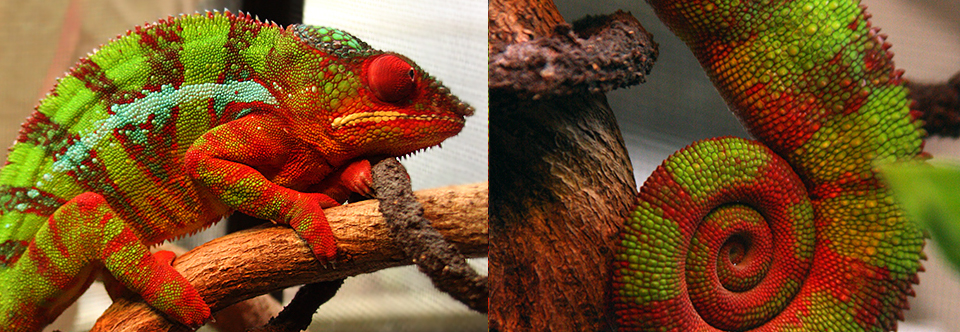
by Fauna | Sep 20, 2013 | Blog, Reptiles
Huey is our resident panther chameleon (Furcifer pardalis) who lives in an extra-large screen cage in the front of our store. He’s usually mostly green, but with all the red in his face, you can see why they’d say he was, “fired up.” A lot of people say that when they greet Huey, he will respond by climbing up the screen to meet them. The name Panther Chameleon comes from it’s scientific name Furcifer pardalis. Furcifer means “forked”, referring to their feet, and pardalis means “spotted” as in a leopard or panther. These fascinating creatures can grow to be 20 inches in length! . To learn more about Fauna NYC, visit our website! Sign up for our eNewsletter for new animal arrivals, product discounts, and upcoming...
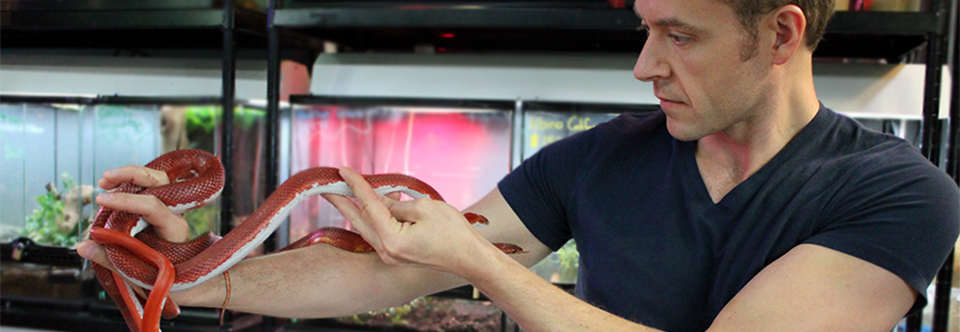
by Fauna | Sep 13, 2013 | Blog, Reptiles, Snakes
Corn snakes come in a variety of color morphs. We are very excited about this trio that we picked up to have as future breeders here at Fauna. This particular morph is called “extreme pied sided hypomelanistic“. This is a relatively uncommon morph that is highly sought after. When found, they command a pretty high price. We hope to be able to provide them at a more reasonable amount once they start producing young. They are just one example of the many beautiful colors in which corns can be found. . To learn more about Fauna NYC, visit our website! Sign up for our eNewsletter for new animal arrivals, product discounts, and upcoming...
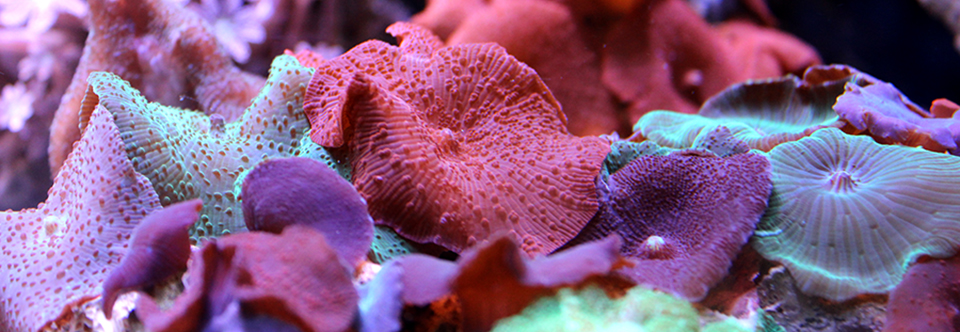
by Fauna | Sep 10, 2013 | Aquatics, Blog, Corals
Written by Christian Morehouse Many people that start their first saltwater aquarium, myself included, seem to convince themselves that they would be happy with just fish. “Oh no. I don’t need to do corals. That’s too hard.” After a few months, they reach what seems to be a natural progression to stagnation. Their tanks are fully stocked with fish and they are learning new things every day. With a little experience and confidence under their belt, they decide to venture onto their first coral. That is when people make their way into Fauna and ogle at all the variety, but they have no idea where to start. Some corals are incredibly easy while others are particularly challenging. Different families and genera have different care and compatibility requirements. The types of coral you choose often help dictate the equipment and setup you will need. This post will be about the four major classifications of corals and the general requirements for each. Soft corals Soft corals are often the easiest to keep and a great choice for a first coral and include, leathers, zoanthids, polyps, and mushrooms. They come in a variety of shapes, sizes, and colors and many offer a wonderful amount of movement to a tank. They are hardy and are not particularly sensitive to less-than-perfect water quality, which allows the new owner a small learning curve. Most will also do well with lower levels of light and flow, which makes it an easy choice for someone just starting out who has not yet invested in a high-end light setup. However, they do need adequate amounts of light and...







